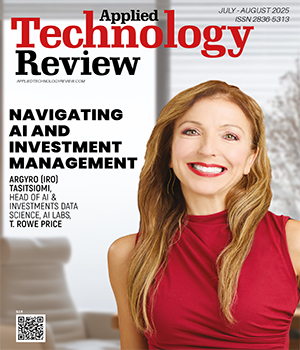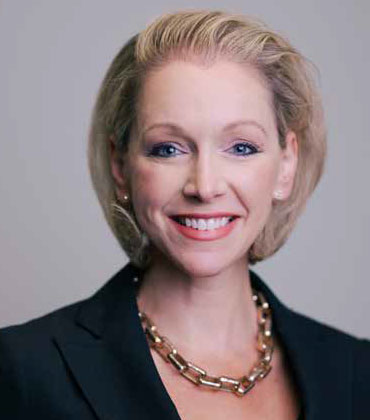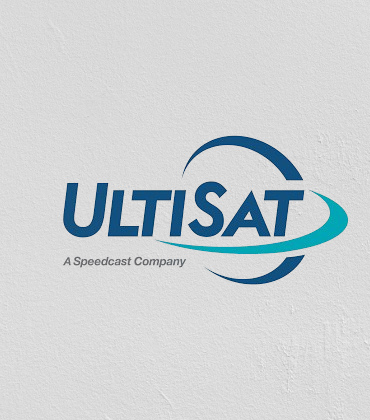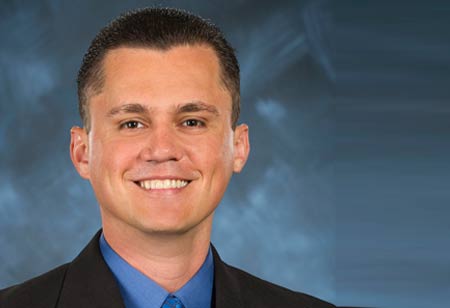THANK YOU FOR SUBSCRIBING
Applied Technology Review: Specials Magazine
From Academia To Ai In Investment Management My professional journey includes paths I could never have anticipated. Growing up, I saw myself in academia and after earning a PhD in Astrophysics from the University of Chicago, I conducted research and taught at Princeton University. It was during this time that my career took an unexpected turn. I was offered a role in finance, despite having no formal background in the field. Taking that leap into the unknown marked the start of an exciting new chapter. After delving into quantitative finance during my tenure as a “Strat” VP at Goldman Sachs, I took on a leadership role in the startup world as the Head of Data Science for a SaaS product. Then, I transitioned to the buyside and joined BlackRock as a director in their AI Labs. Machine learning and other AI methodologies became integral parts of the approaches my team employed there. A couple of years ago, I joined T. Rowe Price, an active asset management firm, as the Head of
Satellite Communication Solution 2025
DataPath, a Gilat company and leading provider in satellite communications (SATCOM) solutions, is paving the way for next-generation capabilities with its 30+ years of industry experience. Its tried-and-tested ground systems and modem technology form the foundation for new offerings that fortify the company’s position as a go-to partner for defense end-users. Historically, defense sectors in the U.S. and allied nations relied on geostationary satellites with commercial frequencies like Ku and C bands. These required large dishes that made them less mobile. Recently, the focus shifted to medium earth orbit (MEO) and low earth orbit (LEO), with companies like SES, Starlink, OneWeb, Amazon Kuiper and Telesat deploying satellite constellations in these proximities to offer improved capabilities. This change is driving a pronounced need for advancements in satellite technologies. Capitalizing on the demand for advanced satellite technologies, DataPath’s next-gen antennas connect to multiple networks even in highly contested or congested environments. They enable tactical forces to flexibly, rapidly and reliably connect to new orbits and gain much-needed visibility. DataPath’s solutions also feature new modem technology and multi-orbit compatibility (Ka and Ku bands at MEO and GEO) that offer extensive resiliency and portability, representing a significant advancement in SATCOM technology. Like all of their products, they are made in the United States in their Atlanta, Georgia state-of-the-art production facility. Our advancements in transportable Our advancements in transportable ground systems and multi-orbit modem technology provide for reliable, resilient and secure communications when connectivity is most critical ground systems and multi-orbit modem technology provide for reliable, resilient and secure communications when connectivity is most critical,” says Nicole Robinson, president.
Geo Satcom Solution 2025
Founded on the principle of customer-centric innovation, UltiSat provides a complete portfolio of remote connectivity solutions tailored to the unique demands of high-consequence missions. For over 30 years, the company has delivered cutting-edge, resilient communications to organizations operating in some of the world's most challenging environments. Its clients range from defense and civilian government agencies to humanitarian aid organizations and critical infrastructure providers. Rapidly emerging new communications technologies, including 5G wireless networks and new low Earth orbit (LEO) satellite constellations, offer promising capabilities for remote users. But separating marketing hype from mission readiness can be a challenge. “We specialize in providing field-proven connectivity solutions for missions that demand the highest levels of performance and security," says David Myers, president and CEO of UltiSat. UltiSat’s ability to engineer bespoke solutions in-house — including satellite, wireless and terrestrial technologies — sets it apart in the market. The company takes a vendor-neutral approach, evaluating the best technology for the mission of developing a tailor-made solution. UltiSat solutions encompass initial design, complete remote equipment, connectivity, user bandwidth, field installation and 24/7 live support. The company’s value proposition is its Unified Multi-path Connectivity™ (UMC) approach. It intelligently combines multiple satellite, wireless and wired technologies into a seamless, high-reliability connection for real-time situational awareness, operational decision-making and personnel safety. This is enabled by UltiSat's Sigma Gemini™ appliance, that optimizes throughput and resiliency through advance software defined networking. For clients operating in remote or contested locations, this type of multi-path reliability is paramount.
Robotic Aerial Security Solution 2025
When the line between safety and vulnerability blurs in the blink of an eye, first responders rise to the challenge, braving chaos to protect lives and property. But even the most dedicated teams have their limits-distance, availability and safety concerns can hinder effective action. What if the next evolution in safety didn’t arrive in an emergency vehicle? Nightingale Security is bringing this possibility to life. Its autonomous aerial security systems redefine rapid response by merging speed, foresight and precision. Intelligent drones provide real-time surveillance when human presence isn’t feasible, covering vast areas swiftly and ensuring no critical angle goes unmonitored. The drones serve as powerful force multipliers, enhancing the effectiveness of security teams and integrating into operations across commercial facilities, critical infrastructure, educational institutions and emergency response scenarios. “Just as physical security is a team sport, our technology unites the right players, expertise and technology, through our drone as first responder (DFR) capabilities. This synergy delivers a level of security that transcends the limits of traffic or terrain,” says Jack Wu, CEO. Nightingale’s drones also work harmoniously with a network of advanced sensors and systems. Motion detectors, thermal cameras and other smart technologies act as the eyes and ears on the ground, instantly triggering drones to respond to potential threats. This integration creates seamless coordination between Nightingale’s autonomous aerial systems and the broader security infrastructure, delivering a unified, efficient, responsive and safe network. Reflecting on the importance of these advancements, NYPD Interim Commissioner Donlon notes, “We are at the forefront of these exciting innovations today, and we must always keep seeking out the benefits of new and improving technology. DFR program is part of this evolution. It enables our highly trained officers to be even more responsive to the people we serve and to carry out the NYPD’s critical work in ways that are increasingly effective, efficient and safe for everyone.” Ever-Vigilant, Ever-Ready With an alarm or 911 call, the autonomous threat response system activates, dispatching a drone within seconds. Live video is streamed directly to the security team, providing immediate access to critical information like suspect descriptions, vehicle movements and potential hazards. Real-time insight allows responders to understand the situation before they arrive, enabling quick and effective action. “Saving time means saving lives. It’s not just about getting eyes on the situation quickly but arriving with the information needed to act decisively. Often, the mere presence of a drone serves as a deterrent, signaling to suspects that their actions are already under surveillance,” says Jack. The advantage is particularly vital in active shooter incidents. Integrated with gunshot detection systems, DFR drones provide law enforcement with an aerial perspective to assess the scene before entry, enhancing safety for both officers and civilians. In fire emergencies or mass casualty events, drones offer aerial views that identify injuries, vehicle damage and other hazards. They scan buildings to pinpoint individuals needing rescue and send emergency teams directly to their locations. This capability has become an integral part of modern crime-fighting strategies. “This is now part of our crime-fighting apparatus, and it is truly a game changer,” says NYPD Deputy Commissioner of Operations Kaz Daughtry.
CXO INSIGHTS
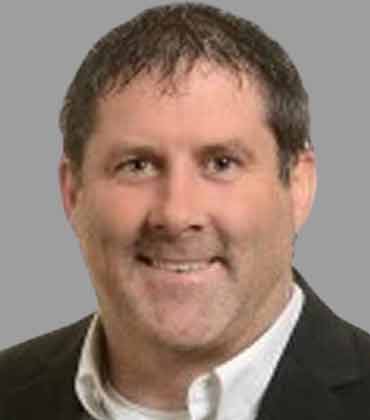
Pioneering Smart Solutions for Accurate Climate Observation
Andrew Siffert, Senior Vice President, BMS Group

Navigating the Future: Geospatial Technology's Impact on Transportation Design
Matt LaLuzerne, National Director of Business Development and Geospatial Services, McKim & Creed

Untapped Potential of Wearables
Raymond I Norris III, Senior Product Manager for Innovation and Disruption at First National Bank of Omaha
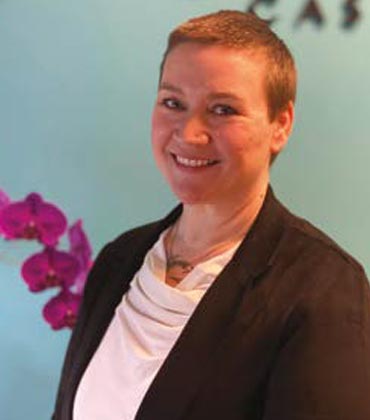
Don't Forget about the Human Element!
Jolene Stewart, Director of Surveillance, Snoqualmie Casino

The Art of the 30-Second Video: How to Hook Your Audience Fast
Robert Jarzen, Creative Director; Audacy

The Right Leadership Style For Todays Workforce
Lou Windsor, Project Manager At Aviagen

The Ultimate SAP Cloud Upgrade Playbook
PETE HOGAN, Senior Vice President of Information Technology, Compana Pet Brands
IN FOCUS
EDITORIAL
The Evolving Landscape of Applied Technology in the U.S.
The Applied Technology market in the U.S. is undergoing a profound transformation, fueled by rapid innovation, cross-industry convergence, and an ever-growing demand for intelligent, efficient solutions. Once viewed as a niche segment, applied technology has evolved into a critical backbone of nearly every major sector — from manufacturing and agriculture to healthcare, logistics, and energy. This dynamic field blends practical engineering with data-driven software and emerging technologies like artificial intelligence (AI), the Internet of Things (IoT), robotics, and automation to address real-world challenges and enhance operational performance at scale. At the core of this evolution lies a surge in digital transformation initiatives aimed at improving productivity, sustainability, and decision-making capabilities. U.S. enterprises are making strategic investments in smart infrastructure, predictive analytics, and machine learning tools to sharpen their competitive edge in an increasingly globalized marketplace. Whether it’s automating factory floors, enabling precision farming, streamlining supply chains, or revolutionizing patient care, applied technology has become a key enabler of progress and innovation. Government support has further catalyzed this growth. Publicprivate partnerships, targeted funding, and ongoing investment in research institutions have provided fertile ground for the advancement and commercialization of applied technologies. At the same time, startups and agile tech innovators are bridging traditional industries with forward-looking solutions that are scalable, customizable, and impactful across diverse environments. Nevertheless, the sector faces significant challenges. Talent shortages, cybersecurity vulnerabilities, and the pressing need for interoperability and standardized platforms all demand strategic focus. As the U.S. applied technology market matures, collaboration between tech developers, industry stakeholders, and regulators will be essential to unlocking its full potential. In this issue, we explore how leading companies, forward thinkers, and disruptive startups are redefining what’s possible with applied technology in the U.S. From groundbreaking use cases to strategic insights, we highlight the trends shaping the future — and underscore why this is a defining moment for applied technology to lead the way in building a smarter, more resilient economy.



